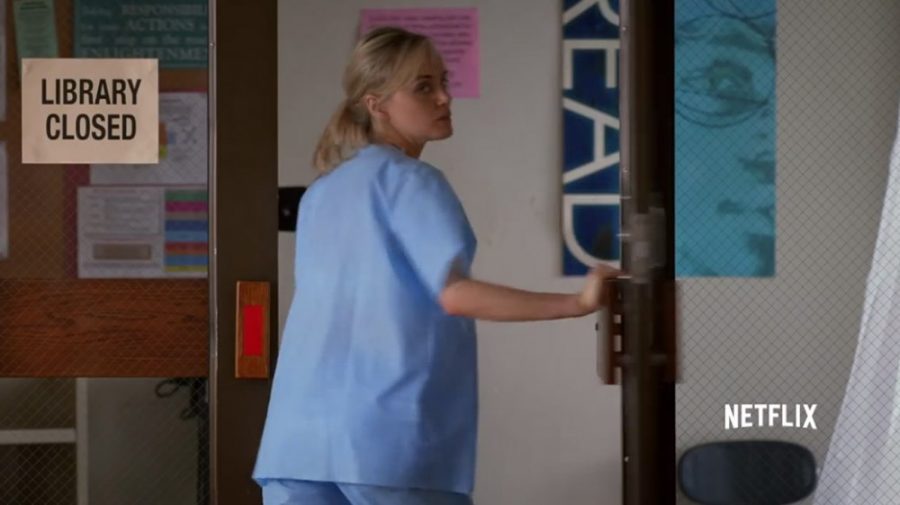As thousands of Americans binge-watch “Orange Is the New Black,” the issue of private prison funding and rioting is steadily becoming a larger state discussion.
After premiering on June 11, the women of Litchfield Penitentiary brought attitude, pain, laughter and their undeniable charm with the return of season three.
The season builds like a slowly burning fire, with each episode providing new tidbits about the inmates’ lives before they were put behind bars. The show confronts a spectrum of controversial topics: those of rape, spirituality, religion, social barriers and even a few bedbugs.
The biggest change this season was Litchfield’s transition from a state-funded prison to a privately owned enterprise. Viewers watch as the prison struggles to maintain itself as an inhabitable facility while inmates and staff fight financial restrictions.
The kitchen began shuffling out a nearly inedible menu of pre-packed slop, and the women were certainly not amused. Many pretended to be a part of the Jewish religion in order to gain access to kosher meals, which included recognizable food groups such as green vegetables.
Shockingly enough, a suitably healthy diet had to be earned in an untruthful manner. But it wasn’t long before the suits behind the corporation that took over the prison began fighting to keep costs down—a Rabbi was called in to weed out the untruthful from the truly devout Jewish inmates.
After a removal of books and educational resources swept the halls of the facility, well-known inmate Crazy Eyes (Uzo Aduba) decided to take matters into her own hands. She began writing her own literature: an overtly sexualized utopian novel. As inmates were grappling for the weekly installments, Crazy Eyes became the E.L. James of Litchfield.
These often comical instances bring awareness to just how many crucial costs exist in a prison, including adequate diet, housing, education, career resources and mental health care. The question remains: how are the costs of these programs being distributed and regulated in privately owned corporate prisons?
Debates over prison funding made state headlines after a two-day-long riot occurred at the privately owned Arizona State Prison Complex – Kingman in Kingman, Ariz., over the holiday weekend. Nine guards and seven inmates were injured, and more than 1,000 inmates have been relocated due to excessive damages.
This is not Kingman’s first encounter with violence. Earlier this year, inmate Neil Early was sexually assaulted and beaten, resulting in his death in the days following the attack. As The Arizona Republic reports, three of the prison’s inmates escaped in July 2010, who later killed a couple from Oklahoma on vacation in New Mexico. Concerns regarding the prison’s private operator, Management & Training Corp., have come into question.
On Monday, July 6, Governor Doug Ducey requested an investigation of the Kingman facilities. Earlier this year, Gov. Ducey pushed to put an additional 70 million into private prisons, despite controversy over the use of privatization. Many argue that the corporations cut corners at the cost of inmates in order to gain profits.
A 2012 report issued by the American Friends Service Committee indicates that, between 2008 and 2010, Arizonans overpaid $10 million for private prisons. Caroline Isaacs, program director for the AFSC, found insufficient security, staffing and inability to provide transparency of operational expenditures at private prisons in Arizona.
The recent riot has sparked discussions over the quality and safety of prison privatization. Arizona Department of Correction’s 2011 report indicated that Kingman’s MTC-owned facilities “are exempt from a state statute that requires private prisons to provide an equivalent or better level of quality than the state.”
One of the main concerns regarding the Kingman riot is inmate unrest and escape. While “Orange Is the New Black” may provide audiences across America with laughter and few tears, it also provides a means for otherwise unlikely viewers to witness the results of cutting financial corners in prisons.









